Henderson, Ray: selected standards and hits 1923-1931
__________________________
Ray Henderson Biographies:
From the Wikipedia profile, adapted (with corrections):
Born Raymond Brost in Buffalo, New York, Ray Henderson moved to New York City and became a popular composer in Tin Pan Alley. He was one third of a successful songwriting and music publishing team with Lew Brown and Buddy De Sylva from 1925 through 1930. This team wrote the majority of the music for several editions of the revue called George White’s Scandals (1925, 1926, 1928, and 1929) and such book musicals as Good News, Hold Everything!, and Follow Thru. After De Sylva’s departure, Henderson continued to write with Brown through 1933, including the music for the 1931 George White’s Scandals, then worked with other partners. In 1934 he composed the musical Say When with lyricist Ted Koehler.
The biggest hits with music by Ray Henderson include the following:
- 1923 — That Old Gang of Mine, Annabelle
- 1924 – Alabamy Bound
- 1925 — Five Foot Two, Eyes of Blue (Has Anybody Seen My Gal?) and I’m Sitting on Top of the World
- 1926 — Bye Bye Blackbird, The Birth of the Blues, Black Bottom
- 1927 — The Varsity Drag
- 1928 — Button Up Your Overcoat, My Lucky Star, and You’re The Cream In My Coffee, Together
- 1929 — (I’m A Dreamer) Aren’t We All, Keep Your Sunny Side Up
- 1931 — The Thrill Is Gone, and Life Is Just a Bowl of Cherries
1923
Annabelle (m. Ray Henderson, w. Lew Brown) – Brooke Johns and his Orchestra, under the direction of Nate Shilkret, recorded 23 June 1923
_______________________
1924

Alabamy Bound (m. Ray Henderson, w. Buddy DeSylva, Bud Green)
Fletcher Henderson and his Orchestra – 1925
.
Sam Wooding and his Orchestra – 1925
.
The Goofus Five (California Ramblers) — Bill Moore, c / Adrian Rollini, gfs / Irving Brodsky, p / Tommy Fellini, bj / Bobby Davis, cl, ss, as, added; Rollini doubles bsx [sic]/ Stan King, d, k., recorded New York, 14 Jan 1925
.
Les Paul and Mary Ford on their Les Paul and Mary Ford at Home show c. 1953. A brief rendition of Darktown Strutter’s Ball follows.
________________
1925
 Five Foot Two, Eyes of Blue (aka Has Anybody Seen My Gal?) – music: Ray Henderson, lyrics: Samuel M. Lewis and Joseph Widow Young)
Five Foot Two, Eyes of Blue (aka Has Anybody Seen My Gal?) – music: Ray Henderson, lyrics: Samuel M. Lewis and Joseph Widow Young)
From Wikipedia:
Has Anybody Seen My Gal? was a popular song of the 1920s, music by Ray Henderson, lyrics by Sam M. Lewis & Joseph Widow Young, first recorded by The California Ramblers during 1925, on their self-titled album The California Ramblers. The simple, four-verse song remained popular during and after World War II and has endured as a representation of the culture of the 1920’s and of the experiences of a soldier coming home after an extended military stay. Because of the first lines of the lyrics, it is sometimes identified as “Five Foot Two, Eyes of Blue”.
Because songs of that era were often performed without being recorded, there are conflicting sources regarding who originally composed “Has Anybody Seen My Gal?”, as the song was often adjusted and had lyrics and verses added or removed several times. Some sources credit Percy Weinrich [should be Wenrich] (music) and Jack Mahoney (lyrics) as writing the song during 1914, but for the song in its most popular form, credit is given to Ray Henderson (music) and two lyricists – Samuel M. Lewis and Joseph Widow Young – usually credited with writing the version that was recorded by The California Ramblers during 1925.
Golden Gate Orchestra (California Ramblers) – 1925
The provider attaches the following information about the band:
The Golden Gate Orchestra was a pseudonym to the well established [sic] California Ramblers who were a popular and prolific jazz group from the 1920s, that recorded hundreds of songs under many different record labels throughout the 1920s. Three of the members of the band, Red Nichols, Jimmy Dorsey, and Tommy Dorsey, would go on to front big bands in later decades.
The original band members were from Ohio, but chose the name California Ramblers because they thought people would be less inclined to listen to a jazz band from the Midwest. They recorded for nearly every independent label in the U.S., Canada and the U.K., using over 100 unique aliases. This excellent record was made in 1925. Vocal by Hall and Ryan.
_________________
The Melody Sheiks – one of the many bands led by Sam Lanin – 1925. Above the video is an RA audio file from The Red Hot Jazz Archive of the same recording.
Five Foot Two, Eyes Of Blue
(Sam M. Lewis / Joe Young / Ray Henderson)
.
Gene Austin – musicians: Gene Austin: vocal, Dave Franklin: piano, May Singhi Breen: ukulele. First issued c. late 1925.
.
Has Anybody Seen My Gal? is the title of a 1952 film set in the year 1928. It’s not a musical; but the soundtrack includes several songs from the 192os. Here’s a clip containing the title song and a bit of dialogue. IMDb credits the performance to “the College Boys and Girls.”
.
West End Jazz Band – a performance on the train to Hudson Lake – October 19, 2008 –
Mike Bezin – cornet, Leah Bezin – banjo, Frank Gualtieri – trombone, John Otto – clarinet, Mike Albiniak – drums, Mike Walbridge – tuba, with Andy Schumm – cornet, Dave Bock – trombone. Sue Fischer – washboard, Jack Kuncl – banjo
____________
I’m Sittin’ On Top of the World (m. Ray Henderson, w. Sam M. Lewis and Joe Young)
Roger Wolfe Kahn and His Hotel Biltmore Orchestra – 1926
.
Frank Crumit – 1926
The Youtube provider says,
As well as singing, Frank is playing the ukulele on this record. Frank E. Banta is playing the piano. Written by Ray Henderson, Sam M. Lewis and Joe Young. Recorded December 31, 1925.
.
Les Paul & Mary Ford – #10 hit in 1953
____________________
1926
Bye Bye Blackbird (m. Ray Henderson, w. Mort Dixon) — There were four hit recordings of the song released in 1926 including those by two popular crooners, Gene Austin and Nick Lucas.
 Gene Austin was a popular screen, radio & recording artist during the mid-1920s into the 1930’s. He was known as “the voice of the south land” and a pioneer in the “crooning” style of singing. A jazz artist at heart, he was equally at home singing country ballads, blues and spirituals. His improvisational style apparent in his recordings, added a unique flavor to his interpretations. — Wikipedia
Gene Austin was a popular screen, radio & recording artist during the mid-1920s into the 1930’s. He was known as “the voice of the south land” and a pioneer in the “crooning” style of singing. A jazz artist at heart, he was equally at home singing country ballads, blues and spirituals. His improvisational style apparent in his recordings, added a unique flavor to his interpretations. — Wikipedia
In the late 1920’s, Nick Lucas became one of the most popular singers on the radio, but prior to his fame as a vocalist, he had established himself as a guitarist. In 1922, Nick cut two sides of a record with the originals, “Picking the Guitar” and “Teasing the Frets.” These were the first solo jazz guitar instrumentals recorded. – NickLucas.com
Gene Austin
.
Nick Lucas
.
Julie London – From the laser disc Julie London Show, with the Bobby Troup Quintet, recorded on May-28-1964 in Japan. In this song, however, the singer has only the double bass for accompaniment. I don’t know who the bass player is. London was married to Troup, a piano player, songwriter and band leader, from 1959 until his death in 1999.
.
Liza Minnelli — Liza With a Z : A Concert for Television
Wikipedia says:
Liza with a “Z”: A Concert for Television is a 1972 concert film, made for television and starring Liza Minnelli. The film was produced by Fred Ebb and Bob Fosse. As well as producing, Fosse also directed and choreographed the concert, and Ebb wrote and arranged the music with his song-writing partner John Kander. All four had previously worked on the successful film adaptation of Cabaret earlier in the same year. According to Minnelli, it was “the first filmed concert on television”.[3] Singer sponsored the production, although the producers did their best to keep any of the sponsors from seeing the rehearsals for fear of them pulling out due to Minnelli’s short skirts.[3]
Filmed on May 31 [1972] at the Lyceum Theatre in New York,[1][4] after only eight weeks of rehearsals,[3] the concert was shot with eight 16mm film cameras[1] at the insistence of Fosse, in contrast to other television specials of the time which were all shot on videotape.
___________________
Birth of the Blues (m. Ray Henderson, w. B. G. DeSylva and Ray Brown)
Harry Richman – recorded 23 October 1926
Ray Charles – from the album Genius + Soul = Jazz, 1961
_________________
1927
 The Varsity Drag (m. Ray Henderson, w. B. G. “Buddy” DeSylva, Lew Brown) – composed for the original 1927 musical Good News. The show was very successful, running for 557 performances.
The Varsity Drag (m. Ray Henderson, w. B. G. “Buddy” DeSylva, Lew Brown) – composed for the original 1927 musical Good News. The show was very successful, running for 557 performances.
The YouTube provider gives some information about the dance:
VARSITY DRAG became popular nationwide (and especially in the New York area) in the late 1920s, mostly because of the 1927 hit song “The Varsity Drag” followed by the movie (1930) with Ann Singleton,”the rubber girl”, making her memorable “shag dance” [performance]. In 1930s the Varsity Drag transformed into the Collegiate Shag, and in ’40s — into the Jitterbug. Like many other dances popular in the big band era, the “shag dances” have roots in the 1920s Charleston, believed to be from New Orleans. All of them are primarly [sic] the 6-count dances full of kicks, hops and taps done to fast jazz.
Frank Black Orchestra — 1927
__________________
1928
You’re the Cream in My Coffee (m. Ray Henderson, w. Lew Brown and B. G. DeSylva)
Annette Hanshaw, 1928
.
Jack Hylton and his Orchestra, 1928
.
Colonial Club Orchestra, led by Bob Haring, with vocalist: Franklyn Baur
_________
From the Broadway musical Follow Thru (1/9/1929 – 12/21/1929)
- Button Up Your Overcoat
- My Lucky Star
Button Up Your Overcoat (music: Ray Henderson, words: B.G. DeSylva, Lew Brown)
According to Wikipedia,
Button Up Your Overcoat…was first performed in 1928 by Ruth Etting who later recorded the song in 1929. However, the most famous rendition of the song was recorded, also in 1929, by singer Helen Kane. The recording features her catchphrase, “boop-boop-a-doop”.
The order of recordings listed at Second Hand Songs suggests that several of them (the Orchestras of Ben Bernie, Paul Whiteman, Jack Hylton, as well as Waring’s Pennsylvanians) may have preceded the Etting recording. She recorded it with The Dorsey Brothers Orchestra during a 15 March 1929 session. The fact that the musical opened on Broadway on the 9th of January 1929 strongly suggests that the song was probably written, and perhaps (as Wikipedia indicates) published, in the previous year. I’ve dated My Lucky Star 1928 for the same reason.
The Dorsey Brothers Orchestra, vocal: Ruth Etting, 15 March 1929*
* 15 March is the recording date given by The Red Hot Jazz Archive, while the video provider dates it 11 March 1929.
Video to be replaced
_____________
Helen Kane – 1929
.
My Lucky Star (music: Ray Henderson, words: B.G. DeSylva, Lew Brown) —
Not to be confused with the much more frequently recorded You Are My Lucky Star, music by Nacio Herb Brown and lyrics by Arthur Freed, from the musical film Broadway Melody of 1936.
Paul Whiteman and his Orchestra, recorded 9 February 1929
___________
Together (m. Ray Henderson, w. B. G. “Buddy” DeSylva and Lew Brown)
Cliff Edwards – 1928
Ray Starita and his Ambassadors – 1928
________________
1929
I’m a Dreamer, Aren’t We All? (m. Ray Henderson, w. B. G. DeSylva and Lew Brown) – introduced by Janet Gaynor in the 1929 film Sunny Side Up, starring Gaynor and Charles Farrell
Johnny Marvin, 1929
.
Annette Hanshaw, 1929
______________
Keep Your Sunny Side Up (m. Ray Henderson, w. B. G. DeSylva and Lew Brown) – also recorded as Sunny Side Up
Johnny Hamp and his Orchestra, 1929
Chick Endor, 1929
Judy Garland – performed on Episode #1 of “The Judy Garland Show,” taped 24 June 1963, but deleted before airing
________________
1931
The Thrill is Gone (m. Ray Henderson, w. Lew Brown)*
Jazzstandards.com says,
Rudy Vallee and His Connecticut Yankees introduced “The Thrill is Gone” on the Victor label. Along with its B side, “My Song,” the tune went on to the charts on September 12, 1931, rising to number ten. Also charting on that day was Vallee’s cover of “Life Is Just a Bowl of Cherries,” which rose to number three.
Rudy Vallee and His Connecticut Yankees, 1931
.
Chet Baker– Radio Recorders, Hollywood, CA, 27 October 1953 — Chet Baker (tp, vo) Russ Freeman (p) Joe Mondragon (b) Shelly Manne (d) — released on Chet Baker Sings, 1956
.
Julie London – from Julie…At Home, 1960
__________________
Life is Just a Bowl of Cherries (m. Ray Henderson, w. Lew Brown)
Rudy Vallee and His Connecticut Yankees, 1931
Sleepy Hall and his Collegians, 1931
________________________________
*This is not the blues song of the same title popularized by B.B. King. Henderson’s The Thrill is Gone was written 20 years earlier.






























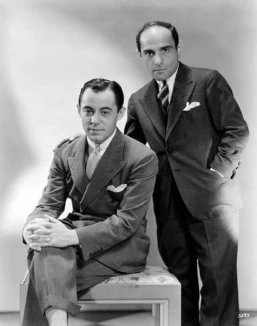

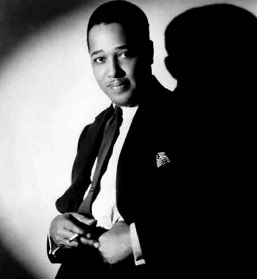


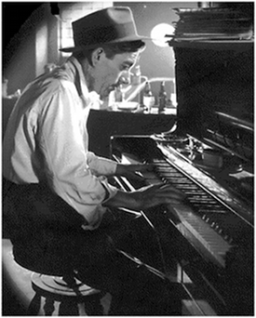
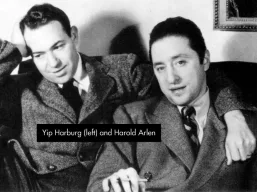




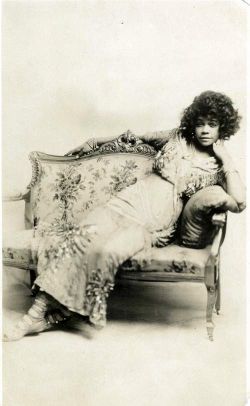










Jan 12, 2016 @ 17:59:04
Another Henderson/de Sylva and Brown song was Just a Memory recorded in 1927 by Paul Whiteman, the only recording I can find other than the Ellington/Hodges version of the mid ’50’s. This is an odd form for any popular song. The A sections are 11 bars, the B section is 14 bars (Ellington makes it 10 or 11).
LikeLike
Jul 06, 2017 @ 11:23:47
Dennis,
Hi. Sorry for the long delay in response. I’m going to take your word regarding the number of bars because my attempts to count them in the 1927 Paul Whiteman recording were unsuccessful. SecondHandSongs.com presently lists four 1927 recordings and a couple from the late ’50s, including one by “Duke Ellington and Johnny Hodges plus others.”
Regards,
doc
LikeLike